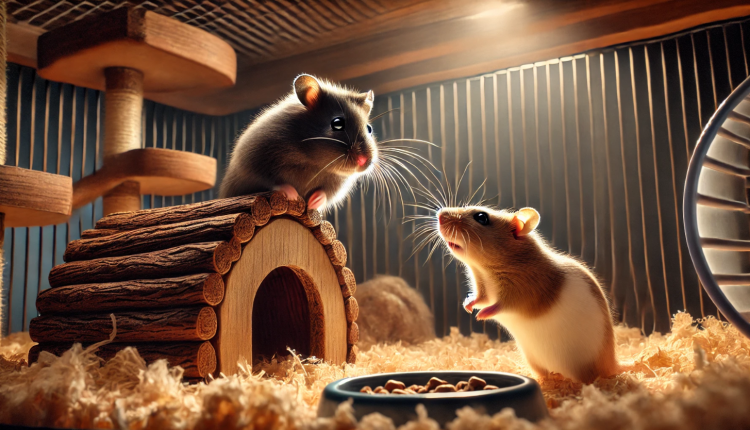The Intricate World of Hamster and Rat Communication: Understanding Your Small Pets
Hamsters and rats, though small in stature, possess complex systems of communication that are vital to their social structures and interactions. Understanding these communication methods not only enhances the bond between pet and owner but also ensures the well-being of these intelligent creatures. This article delves into the various ways hamsters and rats convey messages through vocalizations, body language, and scent markings.
Vocalizations: The Sounds of Expression
Hamsters
Hamsters are generally quiet animals, but they do produce a range of sounds to express themselves:
- Squeaking: Often indicates distress or discomfort. A hamster may squeak when frightened or during a confrontation with another hamster.
- Chattering: Rapid teeth chattering can be a sign of agitation or warning. It’s advisable to give the hamster space when this occurs.
- Hissing: A clear indication of fear or aggression. Hissing hamsters should be approached with caution.
- Purring or Clicking: Some hamsters make a soft clicking or purring sound when content, especially while being gently petted.
Rats
Rats are more vocal than hamsters and use a variety of sounds:
- Squeaking: Can range from mild to loud and may indicate excitement, discomfort, or communication with other rats.
- Bruxing: This is the grinding of teeth, often a sign of contentment. However, intense bruxing can indicate stress.
- Hissing and Screaming: Signs of fear, pain, or extreme agitation. Immediate attention is required to address the cause.
- Ultrasonic Vocalizations: Rats communicate using high-frequency sounds inaudible to humans, especially during social interactions like play or mating.
Body Language: Silent Signals
Hamsters
Hamsters rely heavily on body language:
- Standing on Hind Legs: This can indicate curiosity or a defensive posture when feeling threatened.
- Flattening Body: A sign of submission or fear, trying to appear less conspicuous.
- Grooming: Regular grooming signifies a relaxed hamster, but excessive grooming can indicate stress or health issues.
- Stretching and Yawning: Typically a sign of relaxation and comfort in their environment.
Rats
Rats exhibit a rich array of body language:
- Boggling: When a rat’s eyes rapidly bulge in and out, often accompanying bruxing, indicating deep relaxation or pleasure.
- Piloerection: Fluffed-up fur suggests the rat is frightened or agitated.
- Tail Wagging: Unlike dogs, a rat wagging its tail rapidly may be displaying irritation or warning.
- Play Fighting: Young rats often engage in play fights, which are crucial for social development.
Scent Marking: Invisible Messages
Hamsters
Hamsters have scent glands (flank glands in males) used to mark territory:
- Rubbing Sides: Males especially rub their flanks against objects to mark their territory and signal dominance.
- Urine Marking: Both sexes may use urine to mark their habitat, establishing a familiar scent environment.
Rats
Rats utilize scent marking extensively:
- Urine Trails: Rats leave small amounts of urine to mark paths and territories, aiding in navigation and social hierarchy establishment.
- Scent Glands: Located on the flanks and near the anus, these glands release pheromones conveying information about reproductive status and individual identity.
Human Interaction: Building Trust Through Understanding
Recognizing and respecting these communication methods fosters trust:
- Handling: Approach calmly and allow the pet to familiarize itself with your scent before handling.
- Observation: Regularly observe your pet’s behavior to understand its normal patterns and identify any changes indicating stress or illness.
- Environment: Provide an enriched environment with hiding spots, toys, and appropriate social interaction to promote mental and physical well-being.
Conclusion
Hamsters and rats, though often underestimated, possess intricate communication systems that reflect their emotions, needs, and social structures. By attuning to their vocalizations, body language, and scent-marking behaviors, owners can create a harmonious and enriching environment, strengthening the bond with their small companions.

